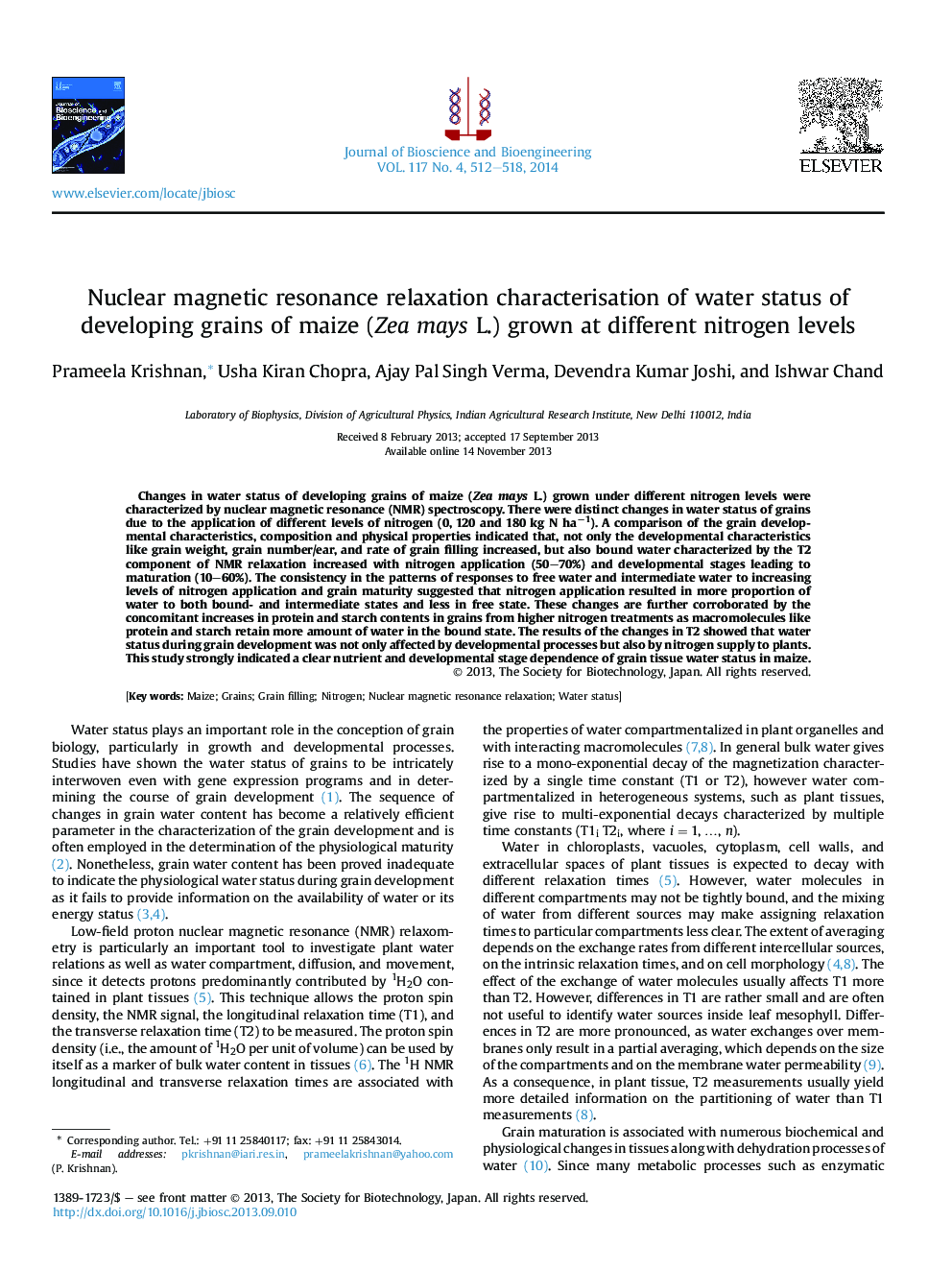| Article ID | Journal | Published Year | Pages | File Type |
|---|---|---|---|---|
| 20753 | Journal of Bioscience and Bioengineering | 2014 | 7 Pages |
Changes in water status of developing grains of maize (Zea mays L.) grown under different nitrogen levels were characterized by nuclear magnetic resonance (NMR) spectroscopy. There were distinct changes in water status of grains due to the application of different levels of nitrogen (0, 120 and 180 kg N ha−1). A comparison of the grain developmental characteristics, composition and physical properties indicated that, not only the developmental characteristics like grain weight, grain number/ear, and rate of grain filling increased, but also bound water characterized by the T2 component of NMR relaxation increased with nitrogen application (50–70%) and developmental stages leading to maturation (10–60%). The consistency in the patterns of responses to free water and intermediate water to increasing levels of nitrogen application and grain maturity suggested that nitrogen application resulted in more proportion of water to both bound- and intermediate states and less in free state. These changes are further corroborated by the concomitant increases in protein and starch contents in grains from higher nitrogen treatments as macromolecules like protein and starch retain more amount of water in the bound state. The results of the changes in T2 showed that water status during grain development was not only affected by developmental processes but also by nitrogen supply to plants. This study strongly indicated a clear nutrient and developmental stage dependence of grain tissue water status in maize.
